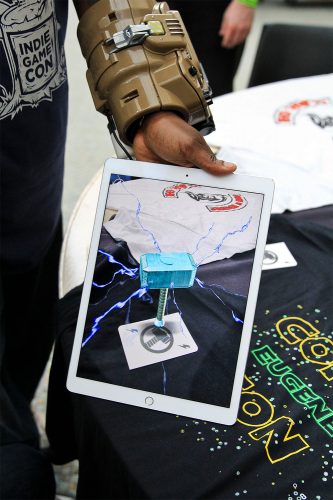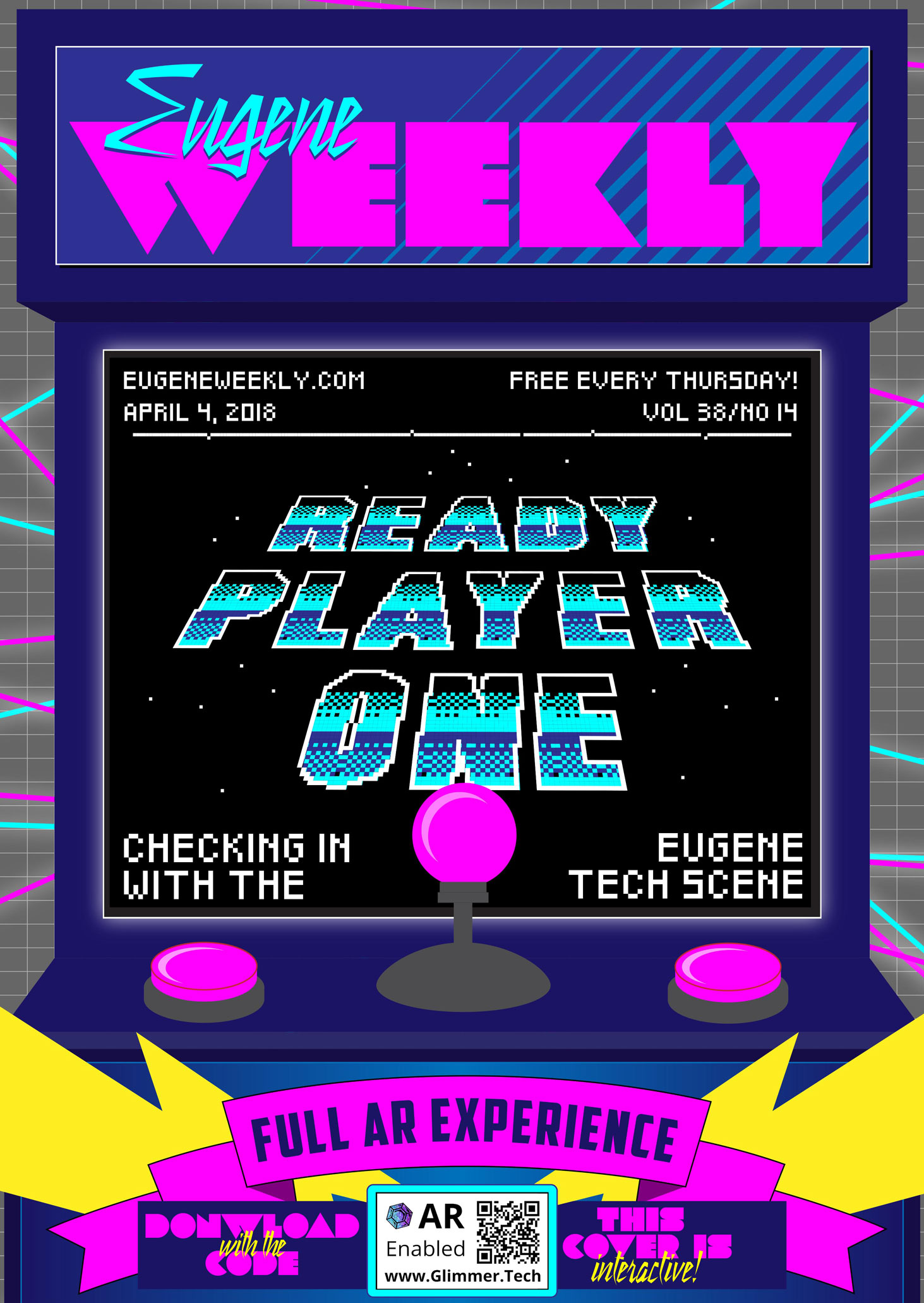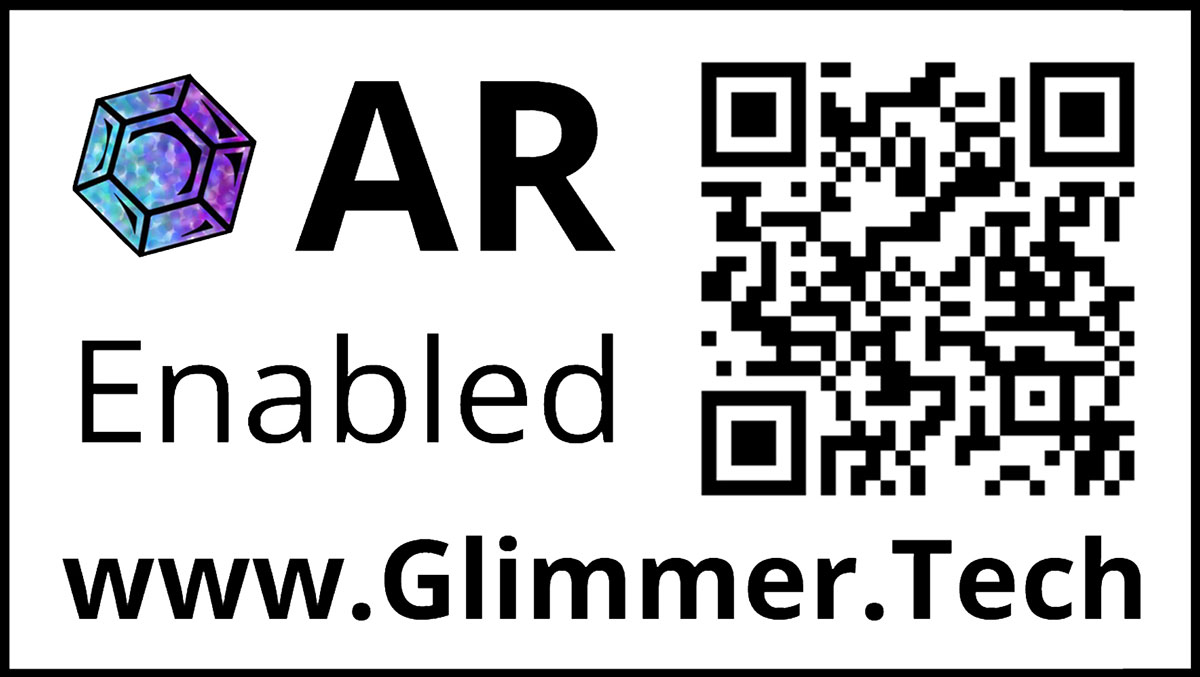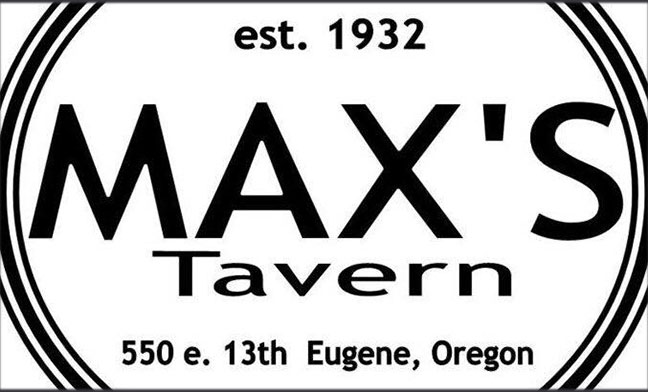
Got your phone out?
Great! Now — if you haven’t already — go to the App Store (iPhone) or to Google Play (Android) and download a free app called GlimmerXP.
Next activate the app and point your phone’s camera at the cover of the April 4 Eugene Weekly, which you are apparently reading right now. Once you’ve scanned the cover you can also point the phone at the advertisements at the bottom of this page.
Seen through the phone app, the two-dimensional EW cover (and, yes, you online readers can find the cover image on our website) expands into three-dimensional space. It’s something like looking at a flat city map that suddenly sprouts skyscrapers and trees.
Welcome to augmented reality, sometimes called AR, courtesy of the Eugene tech startup Glimmer Technology.
Unlike virtual reality, or VR, in which the user is completely immersed in a tech-generated experience, augmented reality means you’re still in the real world but with a little something extra thrown in — in this case, the ability to play an interactive game on the front page of a weekly newspaper.
Viewing this week’s EW cover through the Glimmer app offers a choice between reading this story online — yes, that’s a bit recursive — and playing a simple video game.
Glimmer Technology is the brainchild of founders Ted Brown, Corey Torkelson and Vance Naegle. The company uses off-the-shelf AR technology to design and create experiences for initial clients that have ranged from Arcimoto to the city of Eugene.
“We decided to focus on the part we know we can do well, which is the content,” Naegle says. “So we focus not just on the visuals but the audio, the music, sound effects and things like that.”
Naegle explains that the difference between AR and VR is one of degree, not kind. Both use the same technology but in different ways.
“With VR, like, you’re wearing a helmet and you’re looking around and you can’t see the world around you. Whereas with AR you can. You’re holding your phone and you’re looking at stuff that is only visible to the phone. So yeah, it’s a little different, but for us it’s essentially the same technology, just whether or not we draw the background.”
Perhaps the most widely seen local example of Glimmer Technology’s work was an art project the company did for the city’s downtown parking garages beginning in 2017. Point the Glimmer app at posters installed in the garages and the technology expands the posters’ content in a variety of ways.
“There’s so many uses,” Naegle says. “Entertainment is a huge one right now. I’m just making fun stuff for people to see. There’s engagement when you have a memorable ad that people remember. People like that, and it also gives people a takeaway, something to take home and show their kids or their parents.”
The technology can be used on everything from a newspaper front page to a business card or even a T-shirt.
The key link that enables the AR to work is a “marker,” similar to a QR code, calling up the cloud-based software that makes the AR magic happen.
“We essentially tell the camera through the program that when you see this image, we call it marker No. 1 or 2, then do this thing. We have a little script for you to play. So maybe make a tree grow or play a song or have the spaceships attack the home base, whatever,” Naegle says. “The marker is just the starting point.”
The highest profile local project Glimmer has worked on was the aforementioned collaboration with the city of Eugene to install arts-oriented AR posters in parking garages downtown as part of a project called “Step Into…”
The first iteration, Step Into Poetry, allowed people to read poems generated by AR when they point their phones at posters. Subsequent versions were Step Into Stories, Step Into Comics and Step Into Theatre.
“For theater, we started a play. We have the different characters come out on stage and they act it out. For poetry, we had the poets read their poems and you could hear poems in the poets’ own voices. And then we came up with visuals. You could see music, sound effects.”
The idea is to create an entertainment ecosystem, Naegle says, that’s “unexpected and is low cost of entry for everyone. Accessibility is pretty key.”
Future work will be for the new McKenzie River Discovery Center and Interpretive Park in Leaburg.
“It’s about the McKenzie headwaters and fish,” he says. “We’re working on a business card for them that’ll show a 3-D section of the river with a salmon moving, and then it splashes and the water pops out. That’s kind of the fun stuff we like.”
The whole idea is to create an experience that is unforgettable for the user.
“We’re trying to create a memory hook so that people, when you give them a business card and it comes to life, they’re going to see that and they’re going to be like, ‘Oh, you won’t believe what I just saw. Check this out!’”
Cost for Glimmer’s service is still a bit up in the air, Naegle says. A small single project, such as creating an interactive business card, he says, would probably run in the $700 to $1,000 range.
Possible uses for AR have not been fully explored, he says. “One practical use could be help with automation for wayfinding.” Pointing your phone at a bus schedule, for example, could show you where the nearest bus is and tell you when it should arrive.
Perhaps not surprisingly, Naegle sees a highly augmented future for augmented reality.
First, he expects the technology to become much more commonly used. “I think it’s just going to be more everywhere,” he says.
A bigger change will be to streamline the gadgetry needed to make the magic happen.
“Now you need to look at it with, you know, your phone or something,” Naegle says. “Eventually it’ll just be in our glasses or contacts or, you know, like a pair of sunglasses you put on that’ll give you everything you need to see what, right now, you’re getting from your phone.”





